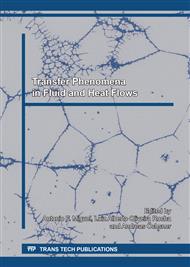p.1
p.19
p.29
p.41
p.52
p.68
p.78
p.90
p.98
Dynamic Phenomena in Laser Processing - The Generation of the Surface Heat-Spot in the Sheet High-Speed Cutting with the Fiber Laser and Change of the Heating Domain
Abstract:
A laser beam with a fixed diameter emitted from an oscillator acts as a heat-spot (or hot-spot by the heat source) on the surface of the material that irradiates. The shape of the heat-spot on the material has been treated as constant for a long time, regardless of the speed of the material to be processed. In fact, on the surface of the material the light and the material mutually act on each other, so the shape of the heat-spot which appears on the surface many vary depending on the processing speed. In order to confirm this, an experiment was performed using infrared sensors sheet, and using a galvanized steel sheet. The experiment confirmed that the shape of the heat-spot on the material surface depends on the processing speed. The decreasing ratio of deformation with respect to the speed was determined, and it was applied to high-speed cutting processing with a fiber laser. We also studied the rate of change of the preheating-area and the removal-area in the heat-spot which is an important domain when performing high-speed cutting.
Info:
Periodical:
Pages:
52-67
Citation:
Online since:
January 2017
Authors:
Price:
Сopyright:
© 2016 Trans Tech Publications Ltd. All Rights Reserved
Share:
Citation:


